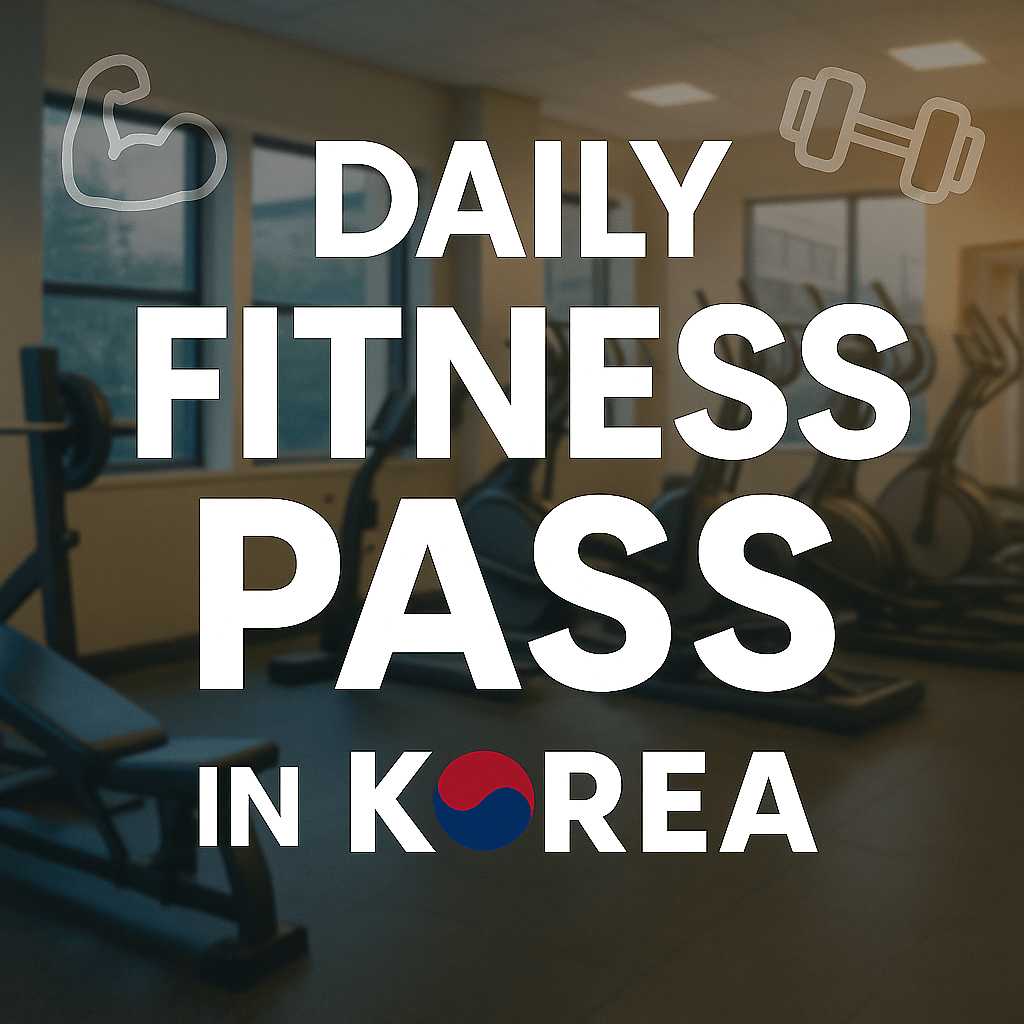
So your hotel doesn’t have a gym. Or it does, but it’s the size of a closet with one dusty treadmill and a yoga mat from 2012.
Don’t panic. Korea is a fitness-friendly country — and you absolutely can keep your workout routine going while traveling here.
From hotel fitness centers to full-on gyms with day passes, here’s how to stay fit on your Korea trip (without losing your sanity or gains).
1. Hotel Gyms: What to Expect (and Not Expect)
If you’re staying at a 4- or 5-star hotel, chances are it has a fitness center.
However, these are usually small, often limited to basic cardio machines and maybe a few dumbbells.
Some hotels don’t have any gym at all — especially budget-friendly ones.
So if you’re used to more than 20 minutes on a stationary bike, you’ll want to explore outside options.
2. Yes, You Can Use a Local Gym in Korea
The good news? Foreigners can use most local gyms in Korea — even without a membership.
You might face a language barrier, but most gyms understand “one-day pass” or simple gestures.
Bring your passport or ID just in case, and be prepared to remove your shoes (some require indoor gym shoes).
Reviews vary, but many are clean, well-equipped, and surprisingly welcoming.
3. What is a Day Pass (일일권 [ilil-gwon]) and How Does It Work?
The word you’re looking for is “일일권” (il-il-gwon), which literally means “one-day pass.”
Most Korean gyms offer this — you pay once and get full access to the facilities for a day.
Prices range from 7,000 to 20,000 KRW, depending on the location and quality of the gym.
Some gyms offer towel service and workout clothes, but it’s always safer to bring your own.
Just show staff this sentence : “일일권 가능해요?” or ask, “Do you offer a one-day pass?” — and you’re in.
4. Gym Etiquette in Korea: Know Before You Go
Korean gyms are generally clean, quiet, and respectful spaces.
Indoor workout shoes are sometimes required (check signage at the entrance).
Bring your own towel, water bottle, and lock if possible — not all gyms provide them.
Shower facilities are usually available, and some larger gyms even offer saunas or dry rooms.
Try to avoid phone calls or loud convos — people value focus here.
5. How to Find a Gym Nearby (Super Easily)
Looking for a gym in Seoul, Busan, or anywhere else in Korea? Just search for “헬스장” (health club) or “피트니스” (fitness) on a map app.
Your best bet is Naver Map, which is much more accurate than Google Maps in Korea.
It shows nearby fitness centers, reviews, opening hours, and even photos.
Pro tip: You can filter by ratings and user reviews to find clean, foreigner-friendly gyms.
📲 Need help using Naver Map? Check out my full guide to Korea’s must-have apps
6. Bonus: Boutique Studios, CrossFit, Yoga & More
If you’re into CrossFit, pilates, yoga, or premium gym chains, you’re in luck.
Seoul and major cities have dozens of boutique studios that offer day passes or trial sessions.
They often have English-speaking staff and international-friendly vibes.
Look up locations in expat-heavy neighborhoods like Itaewon, Gangnam, or Hongdae.
Some even let you book a drop-in session online!
7. Stay Strong, Stay Smart
Traveling in Korea doesn’t mean ditching your workout goals.
From hotel gyms to neighborhood health clubs, there are plenty of ways to stay fit — even with a language barrier.
Just bring a little curiosity, gym shoes, and confidence.
And remember, “일일권 [ilil-gwon]” might be the most useful Korean word you learn on this trip.